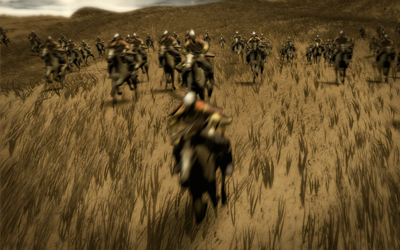CATMotion is CAT’s procedural-motion-cycle-generation system. Using CATMotion you can create motion cycles that adapt to the velocity and direction of the rig without sliding footsteps, even while moving over an uneven surface.
For basic motion-cycle creation, CATMotion has a Walk On Spot mode. Then you can move the rig around the scene by linking it to a Path Node (typically a dummy or point object) which is animated as normal in 3ds Max. This could be assigning a Path constraint or linking the dummy to a crowd system.
You can save CATMotion settings as presets and then apply them to any rig with the same configuration. You can load multiple presets at the same time and then blend from one to another by animating weights. The blending occurs without sliding footsteps.
CATMotion works by breaking the motion of the rig down into its component parts, or controllers. For example, the motion cycle for the pelvis has eight different controllers, including Twist, Roll, Lift, and Push. You have parametric control over each component, typically by editing a four-point curve. You can animate all parameters and assign any kind of standard animation controller to the parameters.

Image courtesy of Cobalt VFX
CATMotion Controls
The CATMotion hierarchy reflects the structure of your rig. CAT has five fundamental rig elements (Leg, Arm, Spine, Tail, Extra Bone) that define the control available in CATMotion. CATMotion generates footprints only for the limbs that are defined as legs. Footprints are unavailable to arms in CATMotion, although it might make sense in some cases; for example, you could animate a gorilla that walks with two legs and runs with four. So in general it is important to think about the motions of your character thoroughly before you build the rig in order to have all the controls you need when animating.
